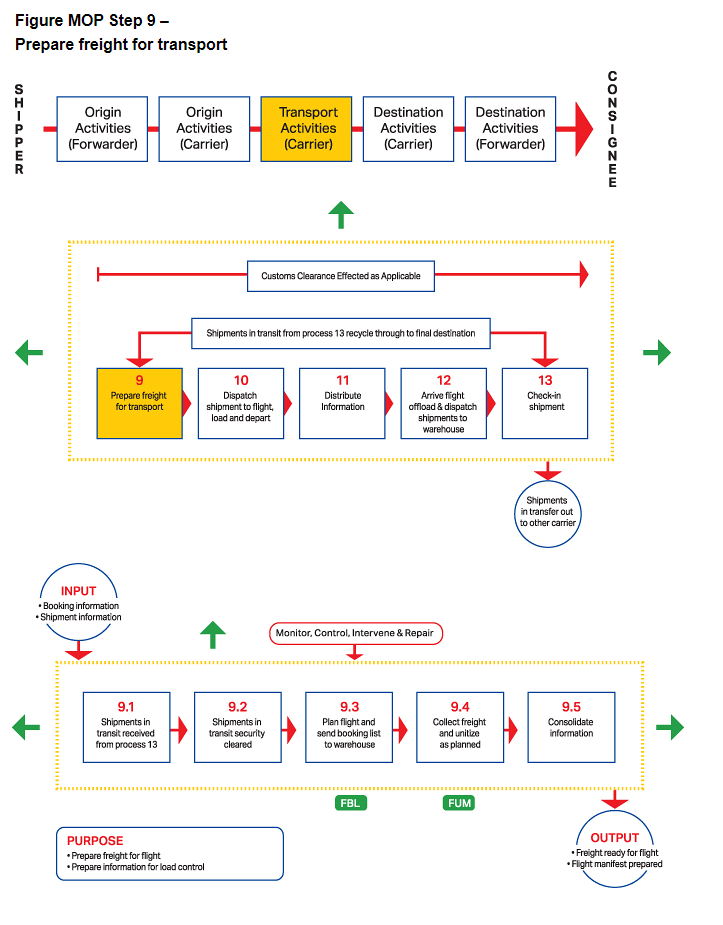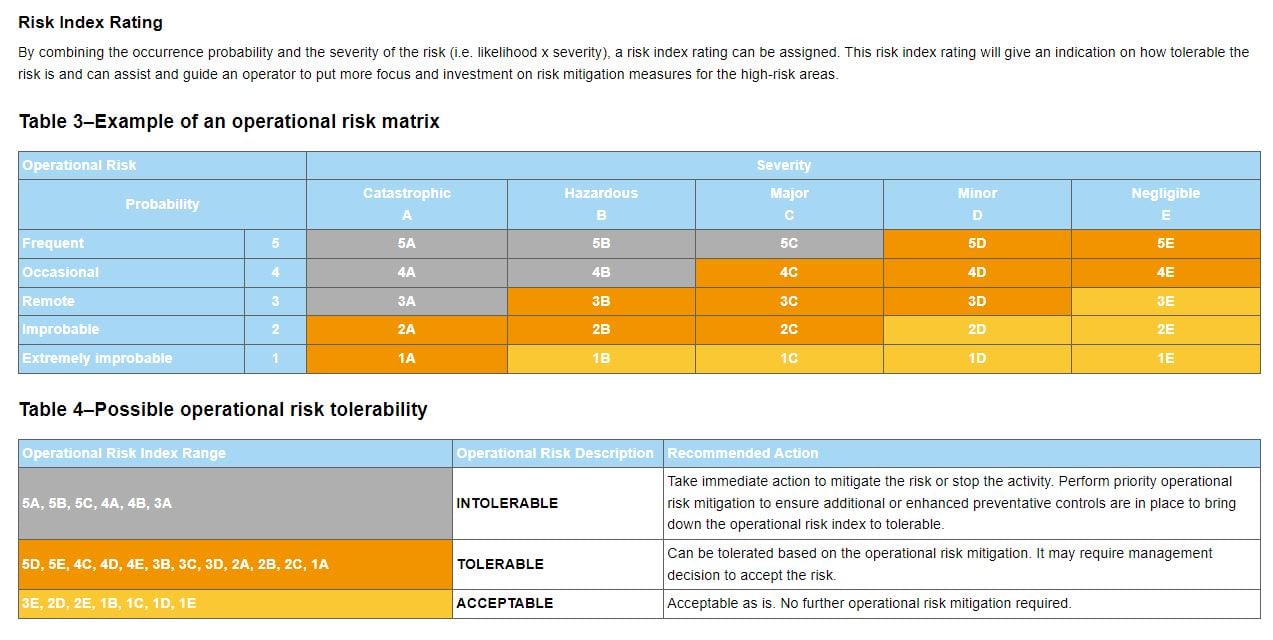Tips for Shippers & Freight Forwarders on How to Prepare Cargo for Air Transport
Every day, 140,000 tons of cargo worth US$18.6 billion are shipped by air worldwide. The sheer volume of cargo shipments requires shippers and carriers to have an in-depth understanding of standard practices and regulations related to the air cargo handling process.
Why is preparing your cargo for shipment so important?
The detailed process of moving air cargo end-to-end begins with the shipper properly following the standard procedures outlined in the IATA Cargo Handling Manual (ICHM). The shipper prepares the conditions for the successful delivery of cargo shipments.
The shipper is responsible for booking and scheduling the freight shipments. Proper cargo labeling and marking helps ensure cargo is handled correctly throughout the shipping process.
From there, the trucking company must confirm the capacity it can transport and create route maps for moving the freight shipments. It is the preparatory work that ensures that the air freight is delivered on time.
According to standard procedures
Door-to-door cargo handling is a very detailed process. The multi-step procedures require planning, care and precision to ensure the safe delivery of the cargo shipments to their final destination. Standard procedures must be in place and strictly followed to ensure that the process runs smoothly and that minimum incidents are reported. Standard procedures are tested for the most efficient, safe and timely best practices to properly perform a work function.
What is a MOP?
When following best practices for a specific work function such as cargo handling, it is important to have a Master Operating Plan (MOP). A cargo handling MOP describes processes at different levels involved in the transportation of air cargo to enable a systematic flow from shipper to recipient. These processes are carefully described in the various sections and subsections of the ICHM.
Which parties are involved in preparing cargo for air transport?
There are two main players involved in preparing cargo for air transport. This is the shipper and the carrier. The sender is the original owner of the shipment and makes the packages available for collection by the carrier. The freight forwarder is responsible for freight handling between the shipper, carrier and recipient. The role of the freight forwarding company is significant in the safe delivery of cargo shipments.
Prepare cargo for shipment

Preparing cargo for shipment is a multi-step process that, when properly followed, reduces problems that can arise during cargo handling. It includes 5 main steps:
1. Receive transit shipments from shipper
Receiving the shipment from the shipper is the first step in the freight forwarding process and there is a specific protocol that needs to be followed. Each subsequent action must be performed, but there are also procedures for properly fulfilling the duty. When collecting cargo, a carrier must:
- Check the cargo label
- Check load label
- Confirm special requirements
- Run a temperature check
- If empty ULDs are required, load ULDs
- Verify that the packages match the shipment details and package ID
- Load cargo into the vehicle
2. Shipments in transit are security checked
Maintaining a high level of security during the cargo handling process is paramount to building strong relationships with other stakeholders. A high level of trust is required when hiring freight forwarders. For this reason, the IATA Cargo Handling Manual (ICHM) includes a section dedicated specifically to cargo handling security.
To start, all employees involved in receiving and handling cargo require a background check. Cargo handlers must be appropriately trained in security procedures and present appropriate identification upon collection and delivery of goods. All other security measures must be followed according to IATA manuals.
3. Plan flight and send setup plan to warehouse
As part of the planned flight, the airline must receive the preliminary plan details and an initial construction plan must be drawn up. Planning what needs to be set up for the flight in the smallest possible container is part of the flight setup plan. When creating a lay-up plan, certain tasks must be completed as described in Section 9.3 of the IATA Cargo Handling Manual (ICHM).
4. Collect cargo and unify as planned
Before beginning actual ULD assembly, a usability test must be performed to ensure that the ULD and all accessories are operational. Freight should always be transported without damage to the ULD or pallet, whether by forklift or trolley. When picking up the cargo, cargo handlers should pay close attention to the cargo label, which provides instructions on how to handle the container.
5. Consolidate information
It is important to consolidate the material gathered during the construction phase to make the information easier to understand. The completed set-up must be checked against the booking list, pre-manifest and status priority of the special cargo. In addition, the following steps should always be carried out:
- Update special instruction records in the system
- Perform final cargo to carrier or ramp handling agent cargo control
- Generate an Electronic Cargo Manifest
Air Freight Track and Trace
Shippers can be assured that air cargo can be tracked, which is another layer of security offered to cargo during the shipping process. While air cargo track and trace is often used for accountability purposes for perishable and temperature-controlled goods, it is a valued means of tracking goods throughout transit. This allows shippers to know exactly where a shipment is at all times through the container track and trace system using technologies such as RFID (Radio Frequency Identification).
Air cargo track and trace helps track the temperature of goods through PED devices and BLE readers and devices to ensure appropriate temperatures are being maintained and, if not, where the breakdown occurred. Container track and trace devices are also used to share information with customs and expedite the truck’s border crossing through automated crossing.
What training is required for cargo handling?
Regarding air cargo handling, there are some courses that might be required. Anyone involved in the acceptance or cargo handling process must be trained in security procedures and have security clearance. When dealing with special cargo or dangerous goods, specific training is required to handle these shipments.
Why should a small company invest in the ICHM Handbook?
Small, growth-oriented shippers need all the advantages they are offered to achieve their goals. One of those benefits is showing yourself to be an expert in your field. That means being prepared for the many steps involved in freight transportation, understanding step-by-step best practices and regulations, and knowing how to seamlessly collaborate with other departments. The IATA Cargo Handling Manual (ICHM) gives you all this information and more.
New this year-ORA
New this year at the ICHM is the development of the Cargo Operational Risk Assessment (ORA). It is based on the Master Operating Plan (MOP) which provides the air cargo supply chain with an end-to-end process for transporting cargo by air.
The ORA determines the main risks involved in moving the cargo from the shipper to the recipient. To help shippers, freight forwarders, cargo handlers and airlines deliver a seamless cargo handling experience, the ORA also provides a high-level risk mitigation plan.

Who makes the rules and regulations?
The ICHM is published with the helpful input of many individuals, organisations, IATA member airlines and cargo handling agents who are most familiar with the content it contains.
The handbook was developed by the IATA Cargo Handling Consultative Council (ICHC), founded in 2012, together with all sub-groups of the Cargo Services Conferences. The aim of the ICHC is to establish best practices, taking into account all aspects of cargo handling.
Why are air cargo rules and regulations updated annually?
The airline industry and air cargo handling are constantly changing. For nearly 80 years, IATA has made it a priority to promote flight safety, including the air cargo handling process. Over the years, IATA has found that government regulations and laws change frequently and are often more restrictive. IATA updates its manuals annually to ensure stakeholders have the most up-to-date information so the highest standards are being followed.
Where to find more information
Shippers are looking for cargo handlers who are familiar with current safety standards and regulations. To become an industry leader in air cargo handling, get started with the IATA Cargo Handling Manual (ICHM) today.
As shippers and freight forwarders, the IATA Cargo Handling Manual is a valuable resource in ensuring the safe delivery of air cargo to its final destination. However, it’s not the only guide you might need. Learn more about IATA’s other manuals here.